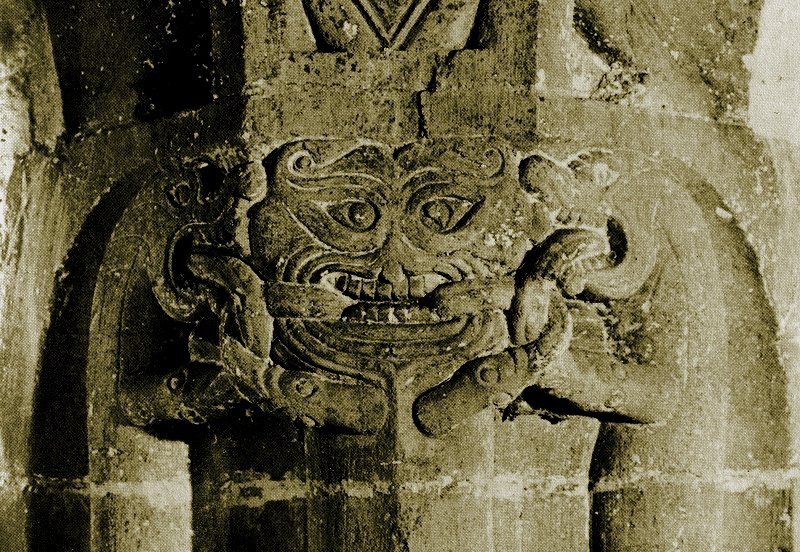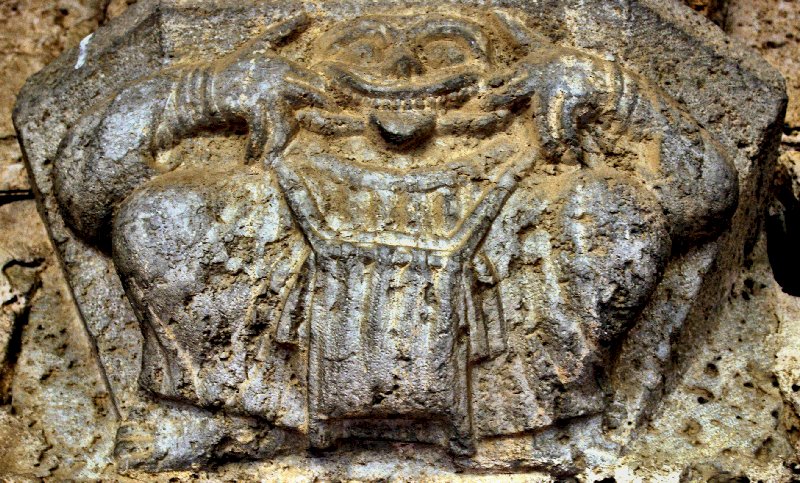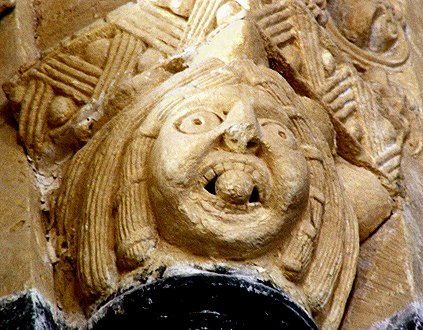Ballintubber Abbey (Mayo)
Together with three other mask-heads attacked by monsters on the East
window
this magnificent late-Romanesque, feline, Gorgon-mask spews snakes from
its toothy mouth
which intertwine with other snakes and bite the head's neck.
The other two snakes emanate from the mouths of flanking monsters to bite
their necks.
It is beautifully, if grotesquely, symmetrical.

It may well be by the same team of sculptors who carved this well-known
capital at Melbourne (Derbyshire),
here photographed by Tina Negus.
It is an acrobatic female spewing tendrils, sometimes mistaken for an exhibitionist.
The tendrils probably represent breath or speech, hence blasphemy, calumny,
false witness, etc.
(I know of no exhibitionist foliage- or tendril-spewer.)
The chevrons most likely represent wrinkles or even ribs.
Acrobats were condemned by the church as unnatural.

Compare with this representation at Tarragona of the ungenerous wealthy
man with his moneybag -
an amazing treatment of Avaritia
which links that motif with tongue-stickers,
mouth-pullers and Gorgons.

A post-Romanesque mouth-puller at Castletown (Louth).
A capital at Rétaud (Charente), where the Gorgon face is framed
by hair bound into something like fasces
indicating that this tongue-sticker is connected with Luxuria.

Detail of the Gorgoneion in the Archæological Museum,
Corfu, Greece.



